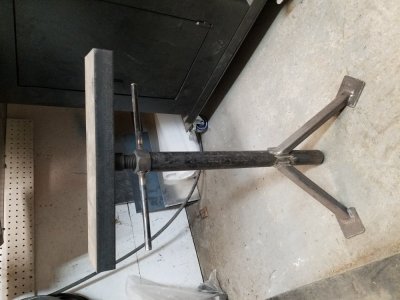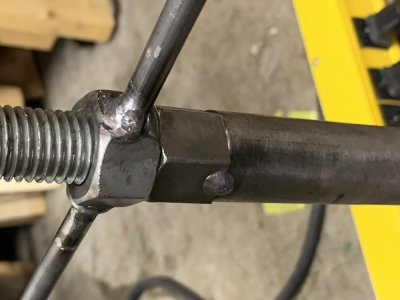historicalarms
Ultra Member
I use the same roller as you modified except mine is mounted on a A-frame stand. The stand is sturdy enough for what it is meant for (lighter stuff) but my roller is as yours originaly was, still swivels around and easily comes off the mounting bar.
While I have that roller for lighter stuff, for heavier stuff I use my engine hoist...just sling a loop of chain from the hanger hook, line er up with the saw table both height-wise and angle wise. I have cut a lot of 8 or 10 inch heavy pipe in my little 4" band saw using this set-up. I make the first cut then roll the pipe 1/3 turn, line up the saw blade with the already cut slot and cut again and again until done. Its suprising how even and square cut you can easily get if you have an accurately cutting blade . If I end up with a jagged cut and need it super square I just face off in the lathe. 8" is easily done but 10" requires a bit of jury rigging of tool post & cutter sometimes.





